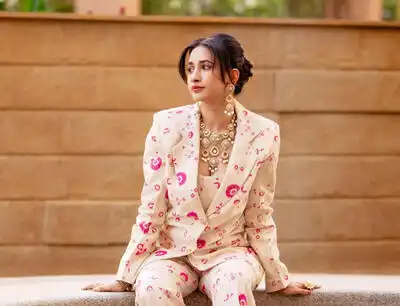With attention spans shrinking in the age of scrolling, the new generation of audiences are craving entertainment that that they can enjoy from the comfort of their homes, right on their phones, believes Manvita Kamath, adding that this was the reason behind her latest move: starring in a vertical format OTT Kannada series — a first for her and an exciting experiment for the industry. What makes this project even more groundbreaking for Kannada cinema is its subscription model. “People have to subscribe to watch the series, which is essentially like buying a movie ticket for content that you can watch on your phone. This is a big experiment, and if it works and the response is good, it will be a major win for our industry,” she adds. In a chat with us, she talks about the Kannada film industry and the OTT space, the role of screenwriting in shaping a narrative and more:
‘I BELIEVE VERTICAL VIEWING HAS ITS OWN AUDIENCE’
While some might argue that long-form horizontal content on OTT still dominates, Manvita feels both formats can co-exist. “Horizontal viewing is a different market altogether; it is still huge, especially for people who want to binge-watch. But vertical content has its own audience, especially among the younger crowd who live on their phones. That said, the real challenge today is cracking the internet’s algorithm. You’ll see a silly video go viral with millions of views, while something meaningful struggles.”
‘KANNADA INDUSTRY MISSED OUT ON OPPORTUNITIES IN THE OTT SPACE’
She notes that the Kannada film industry’s relationship with streaming platforms has been a mixed bag. “While some shows and films, like Ayana Mane and Murphy, gained traction once they hit digital platforms, the industry as a whole hasn’t found its footing in the streaming world. When OTT platforms first started investing in regional content, I don’t think we used that opportunity wisely. We didn’t focus enough on quality. And if you don’t deliver what a streaming platform expects, they won’t come back. Quality isn’t just about good visuals; it’s crucially about the content itself,” she explains.
